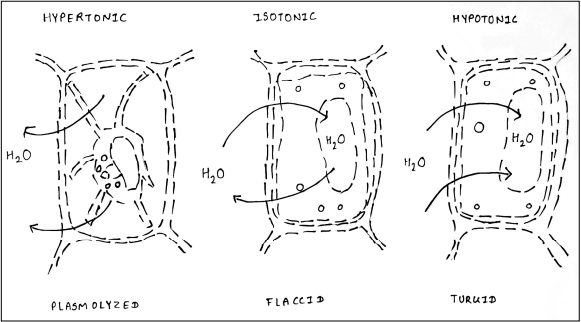Bacterial Motility is an important characteristic which is used to identify an unknown micro-organisms. The Hanging Drop technique helps to determine if the bacteria is motile or not.
Table Of Contents
- Introduction to Bacterial Motility
- Principle
- Materials Required
- Procedure
- Conclusion of Bacterial Motility
Introduction to Bacterial Motility
Motility of bacteria is it’s ability to move by its own at expense of energy. The bacteria either swim or glide in the aqueous medium. The locomotary organelle, flagella allow bacteria to swim. The exact mechanism of gliding is still no clear to us. Bacteria move towards attractant and move away from repellant. The attractant can be food or light and repellant can be any toxic chemical. The ability to move towards or away from chemical (attractant or repellant) is called as chemotoxis.
The bacteria that lack locomotary organelle are categorized in non-motile bacteria and also called as atrichous. The non motile bacteria shows Brownian movement in which it moves as per the movement of particles in the fluid and over which bacteria doesn’t have any control. During Brownian movement, the bacteria collide with other molecules, cells, chemicals or particles.
The hanging drop method allows observing the motility of microorganism under microscope; Robert Koch invented this method.
Principle:
A very small drop of desired bacterial suspension is place on the cover slip, the cavity slide is place on the cover slip and inverted so that the placed drop hang. This hanging drop is observed under oil emersion lense of microscope. The motile bacteria are found to be showing erratic moving whereas the non-motile bacteria remain static.
Materials Required:
- Cavity slide – A glass slide with a small round depression (cavity)
- Cover slip
- Petroleum jelly
- Immersion oil
- 24 hours old broth culture
- Inoculating loop
- Light Microscope
Procedure:
- The cavity slide is washed and cleaned under running tap water.
- The cavity slide is wiped with tissue paper and moves it over flame of Bunsen burner in order to remove the water completely.
- Apply the petroleum jelly on the four corners of the cover slip
- A small drop of bacterial suspension is placed on the cover slip.
- Place the cavity slide over cover slip. The applied petroleum jelly allows to seal the edges
- Invert the slide so that the cover slip comes on the top.
- Place the slide with hanging drop of bacterial suspension under microscope.
- Focus the slide with the lowest magnification and then switch to higher magnification and use oil immersion to observe the motility.
Observation: Either motility is observed or not.
Result: The Bacterial suspension was placed in cavity slide and observed for motility.
Conclusion of Bacterial Motility
The given bacteria are motile/ Non motile.
Need more help? Click here.
If you liked this resource, please Like, Share, and Subscribe us for more content.


